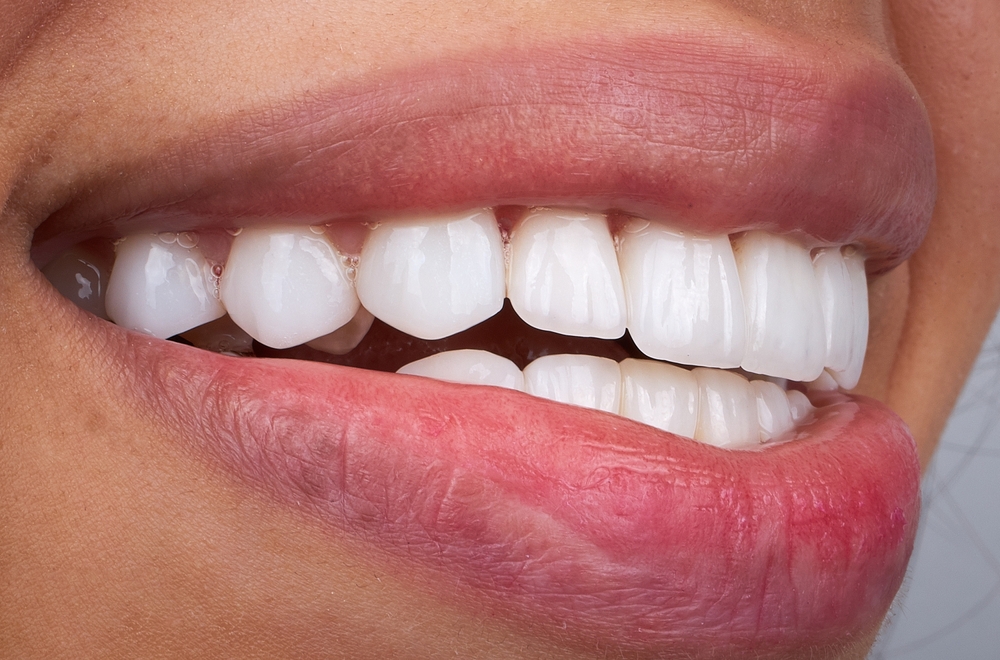
Dentleon İzmir Bornova, Çiğli, Güzelbahçe, Bayraklı Özel Diş Kliniği
What is Dental Bonding? How is Bonding Treatment Applied?
21 August 2025

What is Dental Bonding? How is Bonding Treatment Applied?
Dental aesthetics are one of the most important steps toward a healthy and beautiful smile. Cracked, broken, discolored, or spaced teeth can negatively impact a person’s self-confidence. Small aesthetic flaws, especially in the front teeth, can compromise the integrity of the smile and create negative social and psychological consequences.
One of the most frequently preferred procedures in cosmetic dentistry is dental bonding . Bonding is a minimally invasive treatment that provides rapid and effective aesthetic improvements without damaging the natural structure of teeth. Bonding can be applied quickly and painlessly, providing natural-looking and aesthetically pleasing results, giving patients a more beautiful smile.
Bonding treatment also offers the advantage of being quicker to apply than more costly and long-term solutions like braces or porcelain veneers. This makes it a highly attractive option for those seeking immediate relief from aesthetic concerns.
In this article, you can find detailed answers to questions such as what bonding is, how it is applied, who uses it, and what its advantages are ; and find out whether it is suitable for your needs.
What is Dental Bonding?
Dental bonding is the process of applying a special composite filling material to a tooth for aesthetic purposes. Bonding is achieved by bonding and shaping this tooth-colored material to the tooth surface.
The question “What is bonding?” can be summarized as a treatment method that allows for the quick and cost-effective correction of minor aesthetic imperfections in teeth. It is often used for purposes such as closing gaps, repairing broken teeth, lengthening teeth, or whitening teeth.
How is Bonding Treatment Applied?
Bonding treatment is usually completed in a single appointment and does not require anesthesia. The steps are as follows:
1. Examination and Planning: The dentist examines the condition of the teeth and determines which teeth will be bonded.
2. Tooth Surface Preparation: The tooth surface is roughened with a special acid gel. This ensures a strong bonding material.
3. Composite Material Application: The selected tooth-colored composite filling material is added to the tooth surface in layers.
4. Shaping and Polishing: The material is hardened using a laser or special light, then shaped and polished to resemble natural teeth.
This process typically takes 30-60 minutes, and the results are immediately visible.
What are the advantages of dental bonding treatment?
Bonding stands out in cosmetic dentistry with its many advantages:
– Fast Results: Can be applied in a single visit.
– Economical Solution: More cost-effective than alternative treatments like porcelain veneers.
– Painless Procedure: Anesthesia is generally not required.
– Natural Appearance: Provides a natural aesthetic appearance because tooth-colored material is used.
– Reversible: Performed with minimal intervention on the tooth, it can be converted to other treatments later if desired.
Which Teeth Can Be Bonded?
Dental bonding application is preferred in the following cases:
– Repair of small fractures or cracks in the front teeth
– Closing of gaps between teeth (diastema)
– Achieving an aesthetic appearance of discolored or stained teeth
– Individuals who have aesthetic concerns due to short teeth
– Patients who are dissatisfied with the shape of their teeth
Bonding treatment is very effective in solving aesthetic problems, especially in the front teeth.
Who Cannot Get Bonding Fillers?
Bonding treatment may not be suitable for every patient. It may not be recommended in the following cases:
– Those with severe tooth decay
– Those with bruxism
– Those with severe jaw structure deformities
– Teeth with extensive tooth loss (in which case porcelain veneers may be more appropriate).
The dentist will determine the most appropriate treatment method based on the patient’s condition. For example, bonding is not sufficient for tooth loss; in such cases, implant treatment is one of the most appropriate options.
How Should Dental Bonding Care Be?
The longevity of the treatment and the preservation of its aesthetic appearance after bonding application depend entirely on the patient’s daily care habits. Bonded fillings, like natural teeth, require regular attention and cleaning. If not properly cared for, the bonded surface may become stained or broken.
The points that need to be taken into consideration for long-term bonding are as follows:
- Regular oral care: Brushing your teeth at least twice a day and flossing will prolong the life of your bonding. Plaque buildup, especially between your teeth, should be prevented.
- Avoiding staining habits: Habits such as coffee, tea, red wine, and smoking can cause discoloration on the bonding surface. Therefore, it’s important to reduce consumption or maintain good oral hygiene afterward.
- Avoid hard foods: Foods such as ice, nuts, or hard candy can damage teeth and crack the bonding material.
- Regular dental checkups: The status of your bonding treatment should be checked by your dentist at regular intervals. These checkups can help polish the surface and maintain the bonding’s shine.
- Use of night guards: People with a habit of grinding their teeth (bruxism) can prevent damage to the bonding by using night guards.
With proper care, bonding fillings can last between 5 and 10 years . However, this period can vary depending on personal habits, oral hygiene, and regular checkups.
Frequently Asked Questions About Dental Bonding
Is Dental Bonding Permanent?
Bonding fillings are not permanent, but they are long-lasting. They can last an average of 5-10 years. This period can be extended even longer with regular maintenance.
What is the difference between bonding and porcelain laminate?
Bonding is a faster, more cost-effective method that requires minimal processing. Porcelain laminates, on the other hand, are more durable, long-lasting, and offer superior aesthetics. The choice depends on the patient’s needs and budget.
Can Bonding Treatment Be Used Instead of Braces?
While bonding is effective for closing small gaps between teeth, it doesn’t solve all orthodontic problems. For crooked teeth or jaw irregularities, orthodontic treatment is a more appropriate option.
In conclusion, dental bonding is a fast, affordable, and effective solution for many people with aesthetic concerns. Ideal for correcting minor aesthetic imperfections, this method can be used for many years without any problems with proper care.
At DentLeon, we provide our patients with natural and aesthetically pleasing smiles through our modern cosmetic dentistry practices. If you’re bothered by minor aesthetic issues with your teeth, bonding may be the right option for you.
Recent Posts



